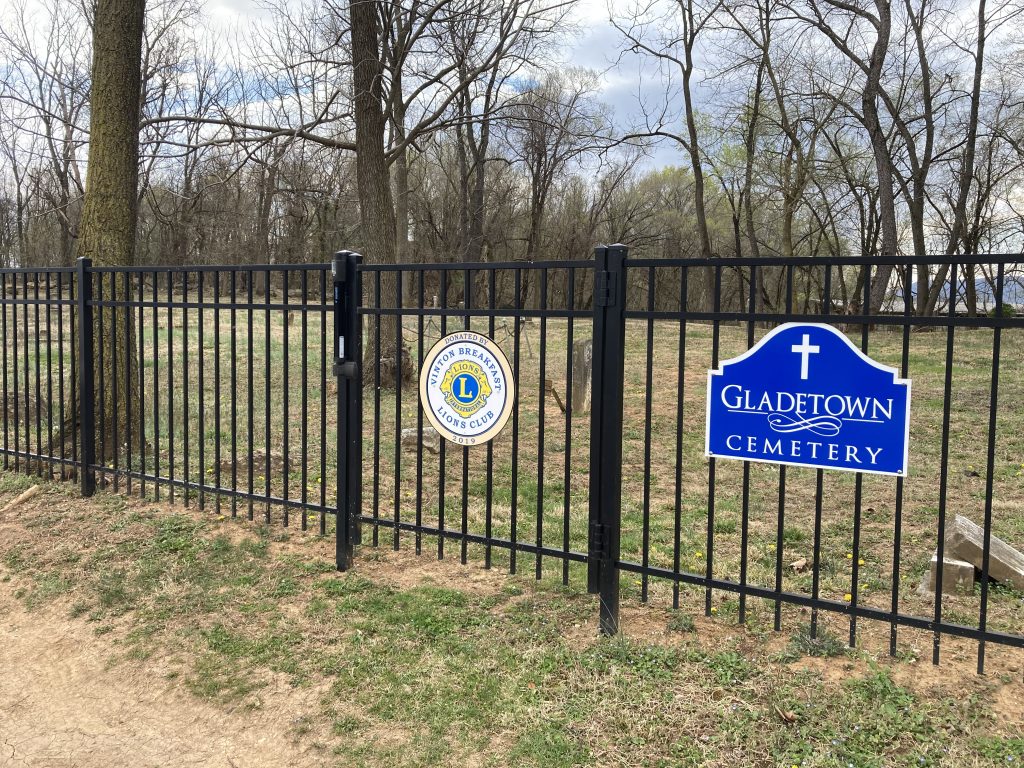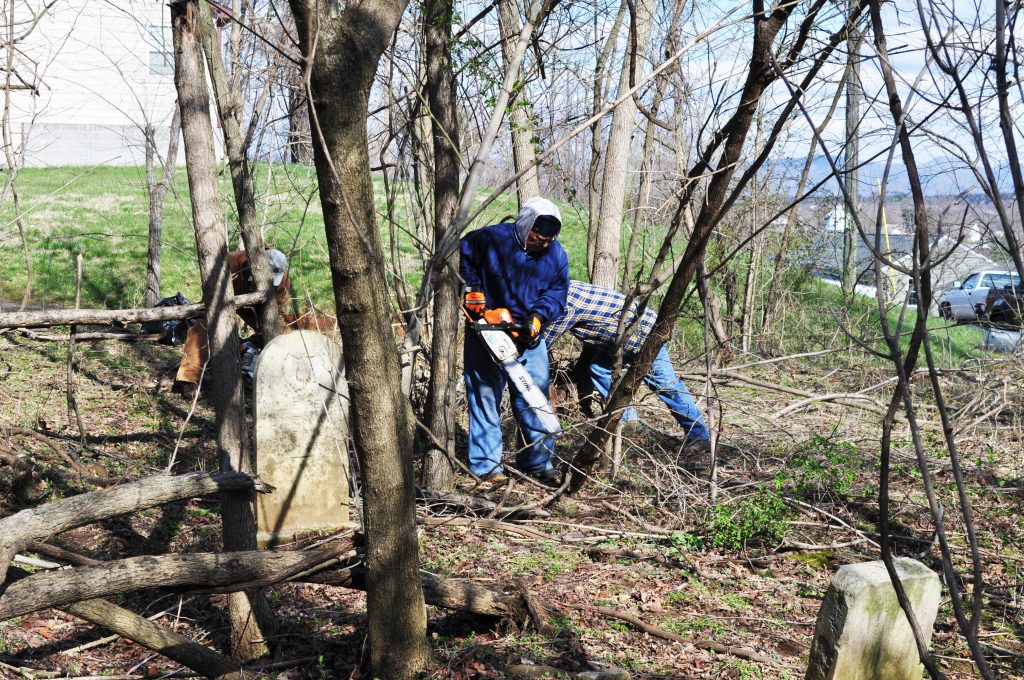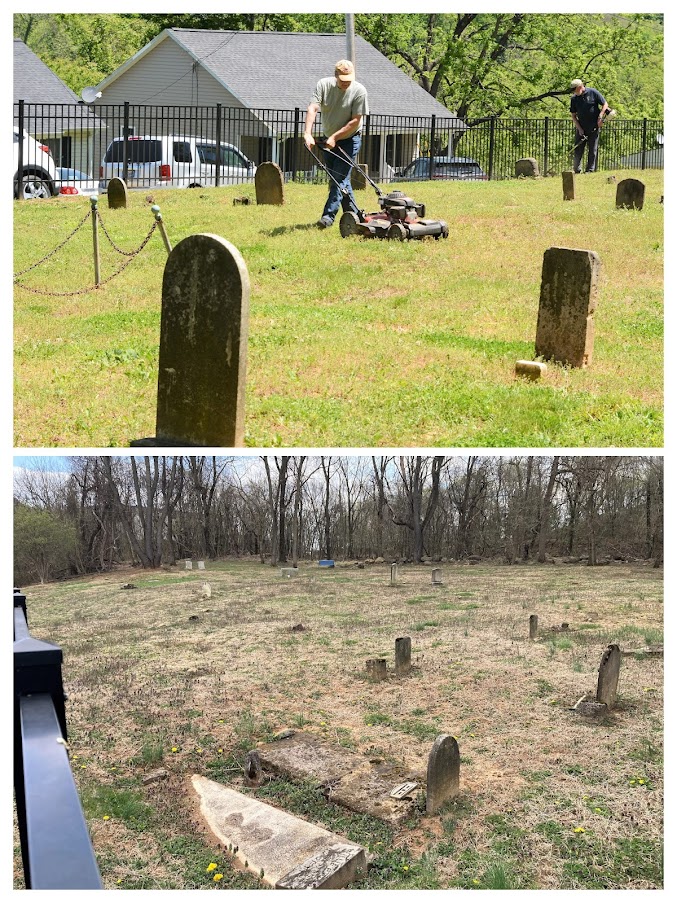By Debbie Adams
In 2014, Gladetown Cemetery, located on top of a steep hill on Giles Avenue in Vinton, resembled a thicket more than an historic resting place for residents of the Gladetown community.

Members of the community who had been maintaining the cemetery were aging. There were few family members left in the area to tend the plots. But the biggest obstacle the community faced was determining who owned the property. Residents of the Gladetown area had been trying for 20 years to obtain permission to take charge of the cemetery’s maintenance.
The land might have originally belonged to the Glade Land Company, which no longer exists. John Franklin, who owned the property in 1906, died without a will. A law exists which allows for the transfer of the property of a person who dies without heirs back to the state. The property becomes “escheat property.”
While gaining property would seem beneficial to most people, gaining property rights to a cemetery has its downside– someone must maintain the graves.
Compounding the confusion was the fact that the property where the cemetery is located was once part of Roanoke County and then was transferred to Vinton during annexation many years ago.
In 1996, Gladetown residents, including historian Joe Banks, began asking that the property issue be settled. Over the years everyone from Vinton town managers to the Roanoke County administrator and county attorney to a state delegate and state senator, got involved in the issue. At one time there was a request for the cemetery property to be taken over by First Baptist Church of Vinton or Reed Street Baptist for maintenance.
Banks and the Gladetown /Carline/Midway Reunion Committee asked for the cemetery property to be conveyed to their organization either by allowing them to purchase the parcel or by donation; or that they be given permission to clean and maintain the cemetery; or that the county do regular maintenance. In 2014, there was still no resolution.
An in-depth survey completed in 1996 by the Department of Historic Resources (DHR) indicated that there are at least 126 gravesites at the cemetery, some over 100 years old. Sixty-six graves had markers, while there were upwards of 40 unmarked internments identified by surface depressions. All the graves were facing east as was the custom. Gravestones vary from the oldest un-inscribed fieldstone to metal alloy to granite and cement.
The study noted that the “Gladetown Cemetery is the only known African American cemetery in Vinton and is an important part of the region’s cultural and social history.”
Darlene Richardson, a student working on her thesis at Hollins University, was instrumental in researching and surveying the cemetery.
One of the earliest graves is that of George Crockett, who was born in 1823. Death dates on the inscribed markers range from 1891 to 1975. Several veterans from World War I and World War II are buried in the Gladetown Cemetery as well.
Thomas Klatka from the DHR said that cemeteries are commonly considered to be one of the best sources of genealogical information, and that cemeteries need to be protected as historic resources. He noted the overgrowth of saplings, brush, briars, and shrubbery in his report.
He expressed his opinion that the Gladetown Cemetery has special historical significance because “a local African American craftsman, Albert Woods, designed and constructed many of the tombstones in the cemetery. Many of the tombstones were engraved by hand and are unique in style and features.”
Albert Woods was well-known in the early years of Vinton for his handmade concrete blocks which are evident in homes and buildings throughout the downtown area.
Banks and a group of men, which included Frank Miller, James Childress, Bob Benninger, and Allen Kasey, worked to clean and maintain the cemetery for a time. Banks began a conversation with Chris McCarty of the Vinton Breakfast Lions Club about the need for restoration and preservation of the Gladetown Cemetery. That led to the Lions Club taking on the maintenance of the cemetery as a legacy project.
March 2023 marks the 8th anniversary of the beginning of that project. That spring, the Lions took up chain saws, rakes, trimmers, mowers, and clippers to remove years of debris, brush, and undergrowth deposited by Mother Nature.

The Lions have continued to maintain the cemetery. In warm weather, a small crew stops by about once a week to spruce things up. They have added a decorative fence around the property, signage, and a bench for visitors stop and rest, once again fulfilling the Lions motto “We Serve.”

.





